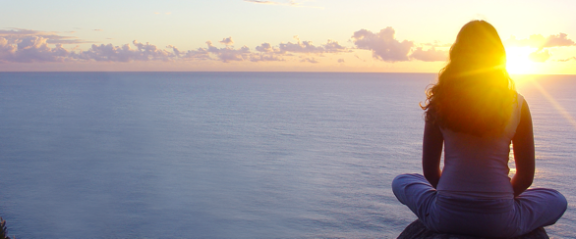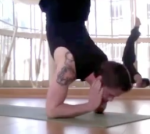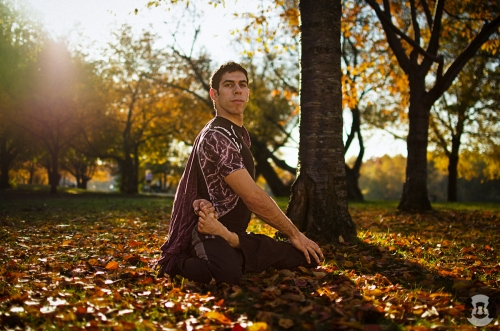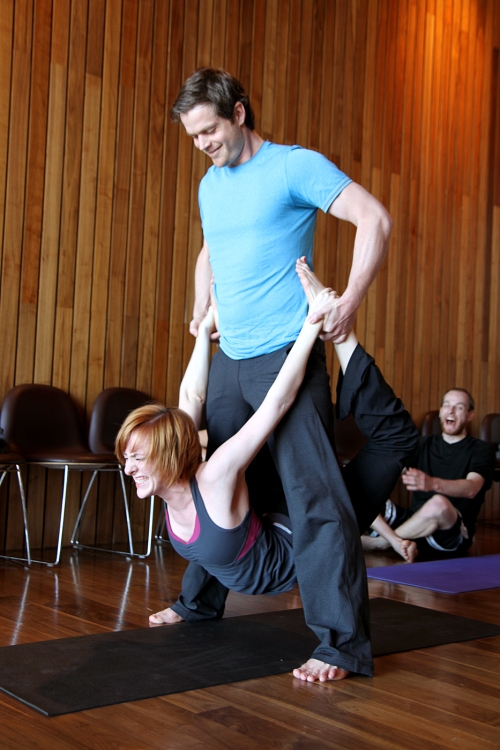 Yoga has increased in popularity in recent years, and more people are now hitting the mat than ever before. Because yoga provides so many valuable tools for mind body health, more people are turning to yoga as their primary form of physical fitness with numerous practitioners reporting between four and six days of practice per week spent on the mat.
Yoga has increased in popularity in recent years, and more people are now hitting the mat than ever before. Because yoga provides so many valuable tools for mind body health, more people are turning to yoga as their primary form of physical fitness with numerous practitioners reporting between four and six days of practice per week spent on the mat.
All in all, I think that this increase in practice is great… I love all things yogic, and I’m really excited to see so many people getting really excited about these things as well. However, I’ve also I’ve noticed that this increase in practice volume seems to be creating problems for many people. I regularly find that those who practice six or seven days per week seem to be more likely to report wrist problems, aches and pains in the lower back, and muscle pulls of all varieties. I’ve known many a yogi who has had to quit in the middle of a 108 day yoga challenge because their hamstrings were so cooked that they simply couldn’t consider the possibility of another day of forward folding.
 When viewed from a physiological perspective, it isn’t too terribly surprising that these types of injuries are occurring in serious yoga practitioners. Regularity in practice is critical if you wish to transform through yoga practices, but it IS nevertheless possible to have too much of a good thing. Your body needs time to recuperate after exercise. Neglect this need, and you will eventually get injured. To that point Jeff Chandler emphasizes that stretching too frequently can be injurious because “Passive stretching can create large tensile loads in the muscle, so it is possible to weaken and injure muscle with vigorous stretching programs. Stretching exercise is like any other training stimulus in that it results in temporary weakening before the body recovers and supercompensates for that activity” (Chandler, 174).
When viewed from a physiological perspective, it isn’t too terribly surprising that these types of injuries are occurring in serious yoga practitioners. Regularity in practice is critical if you wish to transform through yoga practices, but it IS nevertheless possible to have too much of a good thing. Your body needs time to recuperate after exercise. Neglect this need, and you will eventually get injured. To that point Jeff Chandler emphasizes that stretching too frequently can be injurious because “Passive stretching can create large tensile loads in the muscle, so it is possible to weaken and injure muscle with vigorous stretching programs. Stretching exercise is like any other training stimulus in that it results in temporary weakening before the body recovers and supercompensates for that activity” (Chandler, 174).
The temporary weakening that occurs after stretching is no big deal as long as the muscles have time to rest and recover. It’s also not as much of a problem if you are pursuing a gentler form of practice. However, problems begin to occur when you repetitively stress muscles, (say for example in by doing an active vinyasa class for 108 days consecutively) without giving them a break by either resting entirely for 48 hours after you practice or by offering training variety in the form of cross-training practices designed to counterbalance areas of potential weakness.
To avoid some of the problems associated with overtraining, Periodization godfather Tudor Bompa recommends that you organize a training program that “stresses the athlete to provide the stimuli for adaptation, [while] alternating rest periods with work periods” (Bompa, 119). If you wish to apply this to yoga practice, this can be accomplished by alternating days of intensive physical practice that emphasize stretching with days that focus on active rest or strength building and cross-training practices designed to stabilize areas such as the wrists, low back, neck and knees.
In my experience practicing in this way can reduce inflamation, stabilize areas of chronic weakness and decrease the likelihood of nagging injures turning into chronic pain. If you have some area of chronic discomfort that just won’t seem to go away, then you should definitely consider giving this type of practice planning a try.
So how do I do this?
1. Alternate what you practice
Give your body time to rest from intensive stretching by alternating your vinyasa yoga practice with strength building or cross-training practices. For example, you might consider doing a vinyasa practice on Monday, Wednesday and Friday and strength building/cardio conditioning with kettlebell practices on Tuesday and Thursday.
2. Stretch in the morning and stretch in the evening.
Research suggests that people who stretch a muscle every day gain range of motion no faster than those who stretch just three times per week provided that you stretch twice per day. This is a great opportunity to train smarter rather than harder! Rather than repeating the same stretching routine every day, shake it up by giving yourself a few days off per week. Your body will love you for it, and you’ll progress just as quickly. If you decide to do this, spend a little extra time on those days that you decide to go to class stretching for 15 or 20 minutes at home to release those areas in your body that feel stuck or tight.
3. Repeat the same practice three times per week for optimal effect
Generally speaking, any physical exercise must be repeated at least twice per week in order to have a transformative effect. To make sure that your muscles are stretched frequently enough to adapt, consider creating a yoga sequence that you will stick with for at least three weeks. Practice the sequence that you create at least three times per week with a few days off for rest and you’ll see good results in no time.
Does this mean that I should never practice six days per week?
Not at all. It is possible to practice active vinyasa yoga six days per week, but doing so requires a different type of weekly training plan. Interested? Check in soon for more details!









